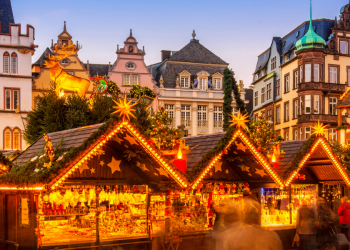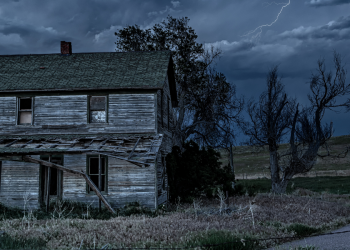The United Kingdom is home to some of the most awe-inspiring UNESCO World Heritage sites on the planet. Visiting these architectural and heritage gems will take you on a journey back in time from the Roman era to the end of the Industrial Revolution. If learning about the most important events in history, past rulers, and witnessing age-old architectural design sounds like your perfect travel plan, here are the best UNESCO World Heritage Sites in the UK not to be missed.
A history lesson
This list of the Best UNESCO World Heritage Sites in the UK incorporates visits to England, Wales, and Scotland. From castles to aqueducts, Roman walls to Stone Age monuments, the UK has such a rich history and much can be learned about how our ancestors lived, the materials they used, and their beliefs through these monumental historical sites.
UNESCO World Heritage Sites in England
Stonehenge
Location: Wiltshire, England
Historical Significance: Stonehenge is one of the world’s oldest mysteries. At face value, it’s a circular outcropping of nearly 100 massive upright stones. While most scholars agree that Stonehenge was once a prehistoric burial ground, the puzzling part is that the innermost stones are made from bluestones, found nearly 200 miles away in Wales. The question remains, how did neolithic Britons manage to move stones weighing as much as four tons over 200 miles without the use of the wheel, engineering, or other forms of modern technology? While much remains an enigma, modern archaeologists now understand that Stonehenge held significance to many groups throughout history.
Curated Experience: Explore Stonehenge with English-speaking audio guides and learn about its mysteries on a 6-hour tour from London.
Tower of London
Location: London, England
Historical Significance: The Tower of London is one of the most notorious prisons in the world. Today the tower serves as the guarded home of the Crown Jewels but has a long history and sordid past. As a tried and true Tudor nerd, I went to the Tower of London as soon as I landed in the UK, eager to see the spot where Anne Boleyn carved her name in her prison cell shortly before being beheaded on the orders of her husband, King Henry VIII. It served as the trial grounds for Guy Fawkes after he attempted to blow up parliament. It was also the execution site of three English queens and even the dumping ground for one English King’s exotic pets.
Curated Experience: Tour the Tower of London and Crown Jewels with one of the Yeomen Warders, more commonly known as Beefeaters.
Palace of Westminster
Location: London, England
Historical Significance: The Palace of Westminster is one of the most iconic UNESCO world heritage sites in the UK. While the Palace of Westminster retains its official title as a royal residence and is owned by Her Majesty the Queen, it’s a residence only in title. It is in actuality the meeting place for both the House of Commons and the House of Lords, the two houses of the Parliament of the United Kingdom.
Curated Experience: Free guided tours of the Palace of Westminster in English start every 15 to 20 minutes throughout the day between 9 am and 4.15 pm.
Hadrian’s Wall
Location: Border between Scotland and England
Historical Significance: Stretching 73 miles from coast to coast, Hadrian’s Wall was built to guard the wild north-west frontier of the Roman Empire in 128 AD. Hadrian himself ordered the wall to be built and made use of the whole Roman army to do so. The majority of the wall was built in stone, however, 30 miles of the Western Wall was built by turf. This wall is estimated to have been built 15 Roman feet high. You can visit Hadrian’s Wall at over 20 different points along the border. When there you can marvel at many Roman artifacts, the remains of towers, forts, and turrets, and learn what it was like for Romans to live in this rugged landscape.
Curated Experience: Take a 1-day tour from Edinburgh to enjoy a range of key sites along Hadrian’s Wall.
UNESCO World Heritage Sites in Scotland
Edinburgh Old Town
Location: Capital City, Edinburgh
Historical Significance: Old Town is a beautifully preserved traditional part of Edinburgh, which will immediately transport you back in time. Lined with cobbled streets and narrow alleyways, Edinburgh Old Town is full of history and charm. Among its most significant and picturesque sites are Edinburgh Castle, St Giles’ Cathedral, the National Museum of Scotland, and the Palace of Holyroodhouse.
Curated Experience: There’s no better way to explore Edinburgh Old Town than on foot. Join this 2-hour walking tour covering key historical sites along the winding streets.
St Kilda
Location: Off the west coast of Scotland
Historical Significance: St Kilda comprises the islands Hirta, Dun, Soay, and Boreray. It is the UK’s only dual UNESCO World Heritage Site, known for both its birdlife and fascinating civilian history. In the past, St Kilda was home to several families, but in 1930, the final 36 families were evacuated to the mainland due to food shortages. Nowadays, the islands are home to an array of birdlife species, approximately 1 million seabirds including the largest colony of Atlantic puffins are its residents. Visitors can look in awe at the breathtaking landscape and incredible variety of wildlife including Atlantic Puffin, Northern Gannet, Soay sheep, and the St Kilda Wren.
Curated Experience: St Kilda is open to the public and free to visit but does require a ferry from the mainland. Initially, you will need to get to the Isle of Harris by either air or sea. Then take a ferry from the Isle of Harris to St Kilda.
Heart of Neolithic Orkney
Location: 15km north of the coast of Scotland
Historical Significance: The Heart of Neolithic Orkney is home to four core monuments; Ring of Brodgar, Stones of Stenness, Maeshowe, and Skara Brae, which consist of ceremonial stone circles, a chambered tomb, and a settlement. These monuments provide a peek into the available resources and local beliefs during the Neolithic Period around 5000 years ago.
Curated Experience: Take a day trip from John O’Groats to the Orkney Islands and enjoy the history, local wildlife, and scenery the Orkney Islands have to offer.
New Lanark
Location: An hour south of Glasgow and Edinburgh
Historical Significance: New Lanark holds the historical significance of the textile industry within Scotland. Founded in 1785, Robert Owen envisioned an industrial community surrounding the production of cotton. Owen designed impressive cotton mills situated next to worker’s housing and formed the largest industrial group in the world. What makes these mills significant is that their design was built with their worker’s best interests in mind, leading the charge for change on a global scale of how workers were treated.
Curated Experience: New Lanark Tickets can be booked online and include a 45-minute tour that operates Monday-Friday at 2 pm and on weekends at 1130am and 2 pm.
Antonine Wall
Location: Across Scotland from Clyde to Forth
Historical Significance: Built by the Romans in 142 AD as a symbol of their strength and power, unlike Hadrian’s Wall to the south, Antonine Wall was constructed with layers of turf to a height of 10 feet. Alongside the wall ran a ditch in the north nearly 16 feet deep, with a secondary mound from the earth thrown out of the ditch. To the south of the wall was a military road helping to deliver supplies to those stationed at the wall. After the Romans abandoned the wall in 158AD, parts were destroyed and it became a fixture of the countryside. You can still enjoy the scenic walk of the wall, to view distinct sections where the wall once stood intact to help imagine the grand scale of this Roman structure.
Curated Experience: Enjoy a walk or cycle along where the wall once stood and ensure to download your guide to follow here.
UNESCO World Heritage Sites in Wales
Pontcysyllte Aqueduct
Location: Situated along the River Dee near the Wales/England border
Historical Significance: This stunning 19 arch aqueduct was designed by Thomas Telford. It took 19 years to design and build, finally opening in 1805. The Pontcysyllte Aqueduct is the highest navigable aqueduct in the world. Built for canal boats, it is truly a spectacle to see and an even more magical experience to travel on.
Curated Experience: As an open site you can visit at any time, it is a great experience to walk along. Alternatively, pay to ride one of the local canal boats for a truly magnificent experience.
Blaenavon
Location: In the South Wales Valleys within the Brecon Beacons National Park
Historical Significance: Blaenavon is an area that was once considered the most important producer of coal, steel, and iron in the world. Unfortunately, due to a change in economic circumstances and the closures of the steelworks, ironworks, and coal mines, Blaenavon lost its purpose and people moved on to find more work. The local government set about gaining UNESCO World Heritage Status for the town, which was achieved in 2000. Now, the town focuses on educating tourists on the history of the once-thriving industries.
Curated Experience: Local self-guided tours are free and incorporate some of the core elements of Blaenavon such as the former Victorian schools, Big Pit National Coal Museum, Blaenavon Ironworks, and Pontypool and Blaenavon Railway.
Caernarfon Castle
Location: North-west of Wales, 20minutes from Bangor
Historical Significance: The medieval castle, ordered by English King Edward I, Caernarfon Castle took 47 years to build. It is a dominant building along the River Seiont with tall walls, polygonal towers, and eagle statues. For the past 700 years, the monarch has traditionally given the title Prince of Wales to the eldest son. In 1969, Prince Charles was given this title by his mother, Queen Elizabeth II.
Curated Experience: Enjoy a full-day tour of Snowdonia and Caernarfon Castle and two other castles.
Conwy Castle
Location: Situated 30 minutes north of Snowdonia National Park
Historical Significance: Though not to the size of Caernarfon Castle, Conwy Castle, also ordered by King Edward I and built by Master James of St George, in just 4 years is impressive to view with eight towers, two gateways, and a bow-shaped hall. Not to mention the 1400 yards of unbroken walls still intact around the town. Originally white with lime rendered walls, Conwy Castle, built for a king and designed to stun onlookers with Snowdonia peaks on one side and the sea on the other, is an incredible site to admire for its historical grandness.
Curated Experience: A day trip to enjoy Snowdonia National Park, Caernarfon Castle, and Conwy Castle.
Beaumaris Castle
Location: In the south of Anglesey, Wales
Historical Significance: Another medieval masterpiece built by Edward I, Beaumaris Castle is a classic defensive design of large, round towers, an outer and inner wall for protection, plus towered gates, similar to those of Conwy and Caernarfon Castles. Built to control the island of Anglesey along with the coastal shipping routes around the north of Wales, this was the last castle built by Edward I and was never truly finished with the outer towers and main gates designed to be much taller. Beaumaris nowadays is known for its size and almost perfect symmetry in design.
Curated Experience: To visit Beaumaris Castle you must pre-book online. Visiting hours are between 10 am-6 pm and you are provided with a timed entry slot.







